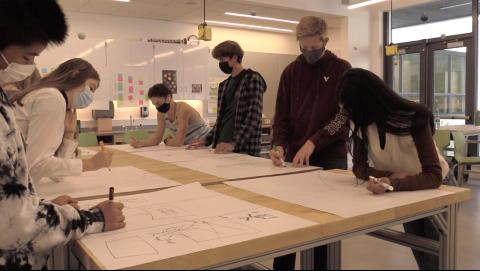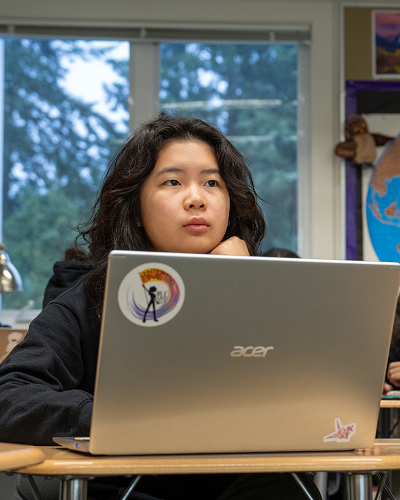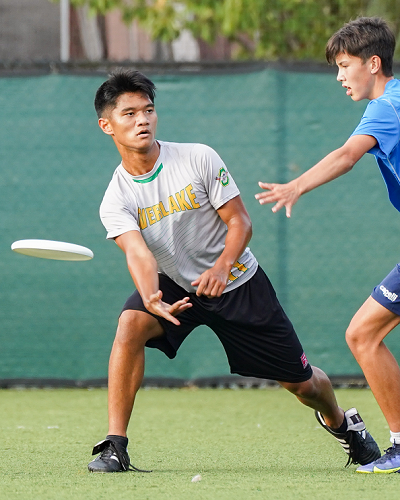Thinking Big in the Idea Lab

When the doors to the Whitten Math & Sciences Center were thrown open, so too were the minds of students taking classes in the brand-new Idea Lab. The vision of the Idea Lab is to provide opportunities for students to be engaged in research and innovation across disciplines that enables them to address “real world” problems.
This work currently happens in three main classes, Engineering Design and Analysis, Industrial Design, and the inaugural Design Thinking: Design with an Impact class, taught by Lisa Orenstein, Interim Director of Teaching and Learning.
Different than a makerspace, one thing that separates the projects in the Idea Lab is empathy. “It’s the human-centered aspect,” Orenstein said. “You’re not just making some interesting product because you like it but you’re making a product that directly addresses a problem you have identified. However, you’re not solving the problem because it will benefit you, but to benefit people who interface with that problem.”
The great thing about the hypotheses in the Idea Lab is that they step outside the boundaries of Math or Science and cross into other disciplines. Students are pushing the limits of curriculum by coming up with their own problems to consider based on their passions.
One student is considering how to educate families who live in low-income neighborhoods about the role functional medicine plays in mitigating symptoms of type 2 diabetes. When using a design thinking approach, it’s not enough for students to brainstorm on their own, they must go out into the world to primary sources and refine their initial idea before delving into possible solutions. In the example above, a student might seek out school cafeteria workers, or pediatricians at a children’s hospital to further refine their idea before ever delving into potential solutions. They must go out and do that investigative work first.
As students pursue primary sources, they are utilizing journalistic inquiry as they conduct interviews with the sources they meet. Learning who to ask, how to find those sources, and what to ask those sources, is placing real-world challenges to implementing change in front of the students.
Since this is the first full year putting the Idea Lab to use, what is in store for the future? Orenstein has a big vision for where Idea Lab programming could go. The next step is figuring out where the programming fits into the overall curriculum. As the year progresses, Orenstein will work together with other teachers to refine the programming that takes place in the Idea Lab classes to work seamlessly together with little overlap.
“We want that space to be sacred for the mission of the Idea Lab as an incubator for innovation and research. We want to keep it focused on its mission,” she said. Orenstein said she dreams of a collaborating with other teachers like Gerald Blycker in his Net Zero 2050 class, to see if adding ‘mini design sprints’ into their existing curriculum would help aid the work of the Idea Lab.
After the first semester of the new Design Thinking class, she will reevaluate how the class is structured and adjust future classes. “When done well, design thinking is highly collaborative,” Orenstein said. In future classes she hopes to add more small group collaboration opportunities to help students push the boundaries of their own ideas. In the next five years Orenstein hopes to have multiple Design Thinking classes for the Upper School grade levels and even a Middle School class that introduces the youngest students to the work in the Idea Lab.
In the meantime, students are thriving with the new challenges presented in the Idea Lab. Orenstein is impressed with the work the students are doing and the students are buzzing with ideas about how to help solve problems they see in the world. The future is bright for Overlake’s Idea Lab and it’s just the beginning.


